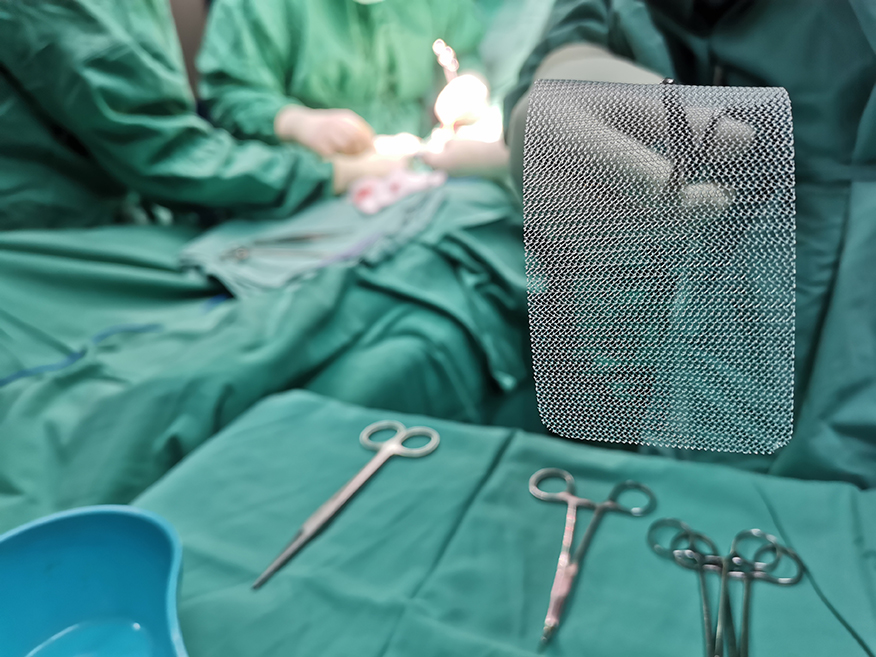Hernias do not heal on their own. Though they can remain asymptomatic for a long time and cause no trouble, they also have high possibilities of getting worse with time. Usually surgical repair is recommended for treating hernias but your doctor may prescribe OTC (Over-the-Counter) antacid medicines at times to reduce the risk of your hernia or may ask you to wear a supporting truss. The hernia has a high rate of recurrence, and surgeons often use surgical mesh to strengthen the repair and reduce the rate of recurrence. The use of surgical mesh may also improve patient outcomes through decreased operative time and minimized recovery time. Now let’s understand more about Hernia mesh.
What is hernia mesh?
A hernia mesh is a surgical device used to provide added backing to damaged or impaired tissue due to hernia till it gets healed. It is placed through the area around the hernia, attaching it with stitches, staples or glue. Mesh’s pores let tissue to grow into the device.
How a hernia mesh works?
A hernia surgical mesh functions as an elastic scaffold for hernia repair. It reinforces walls of muscles and prevents organs from protruding through them.
Types of Hernia mesh
Most of contemporarily existing hernia mesh devices are composed of synthetic materials or tissues of animals. Surgical mesh manufactured from synthetic materials is available in knitted or non-knitted variants. The synthetic hernia meshes are made of absorbable, non-absorbable or a combination of these materials. Animal-derived meshes are made of processed and disinfected intestine or skin of pigs or cows, which are absorbable, suited for application as an implanted device.
Is Hernia mesh safe?
Hernia repair using mesh is currently one of the most regularly accomplished surgeries in general surgery. The use of mesh is recognized to reduce recurrence rates of hernia. As per evidence, non-mesh repair of hernias are associated with a higher recurrence rate at 1 year when compared to mesh repair.
Currently, chronic pain following hernia surgery is the most concerning post-operative complication with recurrence rates decreasing than ever before by using surgical hernia mesh.
Hence, the focus in hernia surgery is now shifted in defining, assessing and identifying risk factors relating to chronic pain. Chronic pain hernia surgery is a vital problem for a considerable number of patients. Some identified risk factors for post-operative pain include younger age, female gender, hernia recurrence, operative complications, and elevated pain levels in the immediate post-operative period. However, recent evidence confirms the safety and effectiveness of mesh utilization in hernia surgery. The recent evidence demonstrates that hernia repair with mesh is not linked to an intolerable level of severe chronic pain. Complication rates are low for hernia repair surgery and in majority of cases, not related to the mesh itself. It is shown that pain scores normally improve post 1 year of hernia repair.
How long does Hernia mesh last?
Non-absorbable mesh stay in the body forever and is termed as an everlasting implant. It is used to provide long-lasting support to the repaired hernia. On the contrary, absorbable mesh gets degraded eventually, losing its strength over time depending on its composition. It is not meant to provide lasting support to the repair site. As the absorbable mesh material degrades, new tissue growth is meant to give power to the repair.
If you are unsure about the specific which mesh to go with, mesh manufacturer and brand used in your surgery and have questions about your hernia repair, contact your surgeon or the facility where your surgery was performed to obtain the information from your medical record.




